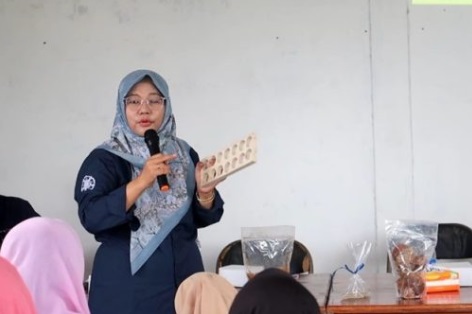
The Department of Agricultural and Biosystems Engineering at the UGM Faculty of Agricultural Technology assisted the Sungai Undang Village community in Seruya Hilir District, Seruya Regency, Central Kalimantan, in unlocking the potential of nipa palm (Nypa fruticans) cultivation.
Dr. Sri Rahayoe, a lecturer from the said department, highlighted that this assistance program is vital in empowering the local community by harnessing the natural resources available in the Sungai Undang area.
With an estimated 200 hectares of nipa palm forests, the region holds immense potential for nipa palm cultivation.
“The potential of nipa palm in Sungai Undang presents a significant opportunity. We aim to foster the development and utilization of nipa palm cultivation,” she elaborated.
Nipa palm is renowned for its sap, which can be processed into various food products like liquid sugar, block sugar, and brown sugar. Therefore, she and Dr. Joko Nugroho Wahyu Karyadi collaborated with Kaleka.id to carry out community empowerment activities.
These activities included training sessions on block sugar and brown sugar production techniques and educating participants on assessing raw material quality throughout manufacturing.
“We also shared insights with the community about leveraging advanced technology in sap processing to enhance the production of sap-derived products,” Dr. Sri Rahayoe added.
Apart from imparting sap processing knowledge, the community was trained in identifying high-quality harvested sap.
Ensuring sap hygiene during extraction to minimize bacterial contamination was emphasized as a crucial practice, mirroring successful implementations in Sabuai Village, Kumai District, West Kotawaringin Regency, Central Kalimantan.
Furthermore, participants were given hands-on experience producing brown sugar from the tested sap, showcasing the feasibility of effectively utilizing nipa palm sap. Based on the quality test results, the harvested sap has good pH and brix levels, making it suitable for further processing into block or brown sugar.
“We also gave the community the opportunity to make brown sugar from the tested sap,” she added.
Dr. Sri Rahayoe hoped this assistance program would increase food diversification in Sungai Undang Village. This would lead to additional income for the residents, which aligns with the village’s goal of advancing its area.
Moreover, using nipa palm forests also reduces the potential for land conversion for plantation activities, thus preserving the coastal ecosystem and the habitat of nipa palm plants.
Author: UGM Department of Agricultural and Biosystems Engineering
Editor: Ika


